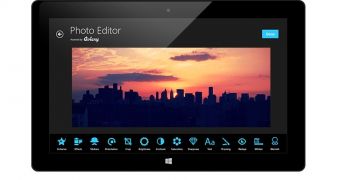While it is primarily promoting accelerated processing units as a new consumer processing and graphics rendering piece of hardware, the company is thinking of things besides games and video.
The Trinity and, more importantly, Richland APUs have powerful integrated graphics, and their x86 processing capabilities aren't slouches either.
That is why, AMD feels, Windows 8 should be able to draw on the full might of the APUs when editing photos and videos.
To enable this, the company has entered a collaboration with Aviary, a company known for the eponymous software development kit (SDK) for Windows 8.
The SDK has been optimized for use on AMD APU architecture, with filters and effects handled by the new heterogeneous compute language C++ AMP.
"Aviary is becoming the standard in mobile and online photo editing with over 3 billion photos edited thus far," said Manju Hegde, corporate vice president, heterogeneous applications and developer solutions, AMD.
"By bringing Aviary to Windows 8, it enables the next billion photos across an even broader range of devices. AMD is committed to supporting the future of industry-changing innovators like Aviary through investment by AMD Ventures and by enhancing user experiences on our award-winning APU platforms."
Aviary has released its first Windows 8 app through the Windows Store. It showcases the features and functionality of the Aviary SDK for Windows 8.
Computations are made on the highly-parallel graphics processing unit (GPU) cores inside the AMD APU instead of the CPU cores. The performance boost of the SDK is a factor of 11.
"At Aviary, we've built the best SDK for photo editing, sharing and monetization. Having the direct support of AMD has allowed us to push even further ahead and expand to Windows 8," said Tobias Peggs, CEO, Aviary.
"AMD's APUs allow us to enable the most processor-intensive photo effects we have ever been able to offer. They've helped to push our technology forward and, in turn, end users can push the limits of their creativity even further."

 14 DAY TRIAL //
14 DAY TRIAL //